Refer to the exhibits, which show a topology and diagnostic commands.
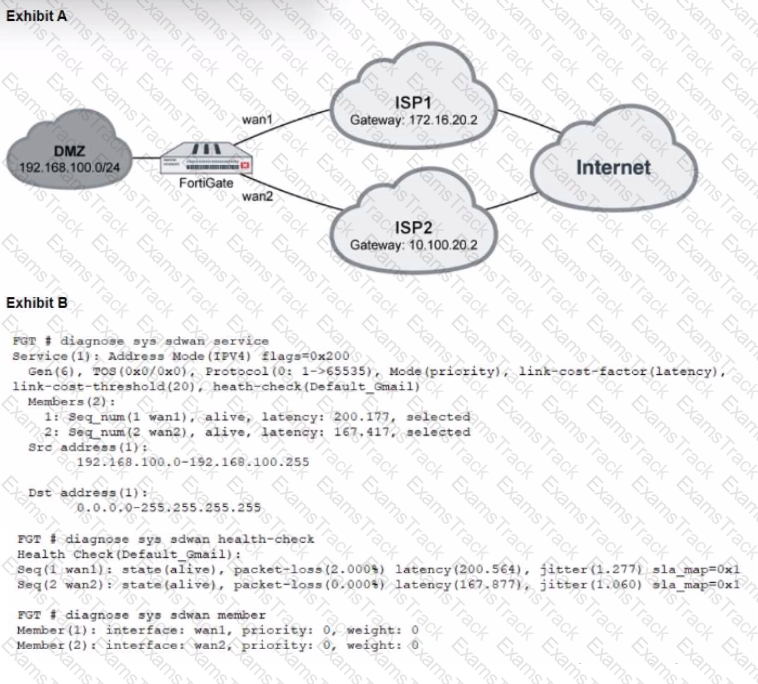
Which two statements about the path resolution are true? (Choose two.)
Review the following FortiGate-6000 configuration excerpt:

Based on the configuration, which statement is correct regarding SNAT source port partitioning behavior?
You are migrating the branches of a customer to FortiGate devices. They require independent routing tables on the LAN side of the network.
After reviewing the design, you notice the firewall will have many BGP sessions as you have two data centers (DC) and two ISPs per DC while each branch is using at least 10 internal segments.
Based on this scenario, what would you suggest as the more efficient solution, considering that in the future the number of internal segments, DCs or internet links per DC will increase?
Refer to the exhibit showing FortiGate configurations

FortiManager VM high availability (HA) is not functioning as expected after being added to an existing deployment.
The administrator finds that VRRP HA mode is selected, but primary and secondary roles are greyed out in the GUI The managed devices never show online when FMG-B becomes primary, but they will show online whenever the FMG-A becomes primary.
What change will correct HA functionality in this scenario?
Refer to the exhibits.
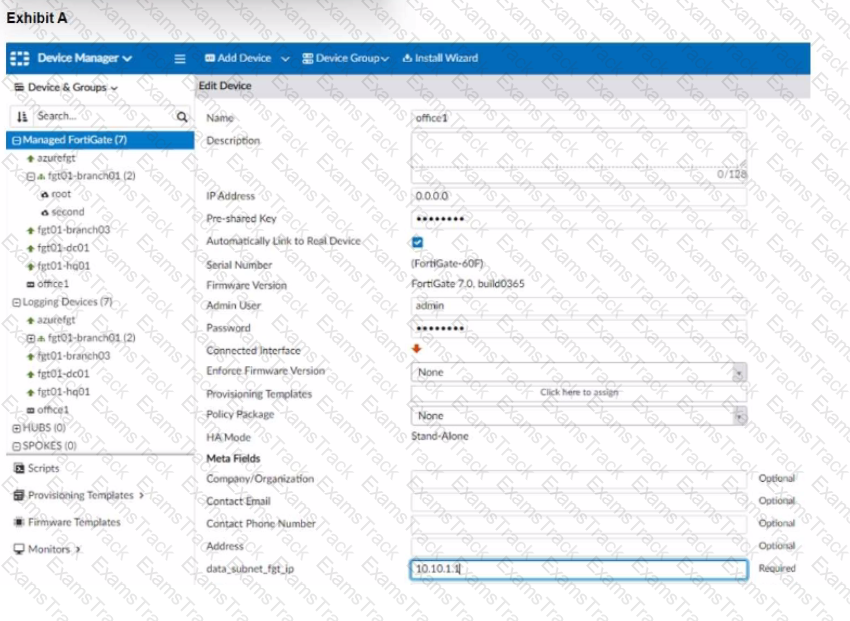
The exhibit shows a FortiGate model device that will be used for zero touch provisioning and a CLI Template.
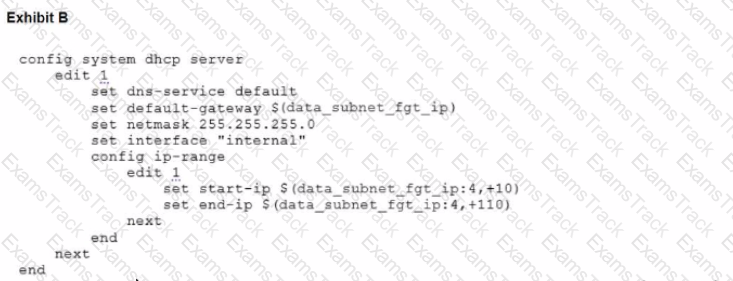
To facilitate a more efficient roll out of FortiGate devices, you are tasked with using meta fields with the CLI Template to configure the DHCP server on the "office1" FortiGate.
Given this scenario, what would be the output of the config ip-range section on the CLI Template?
Refer to the exhibits.
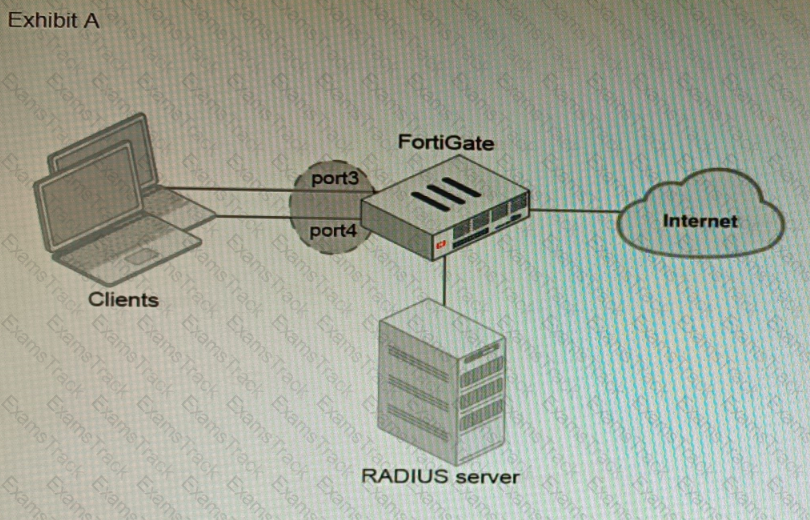
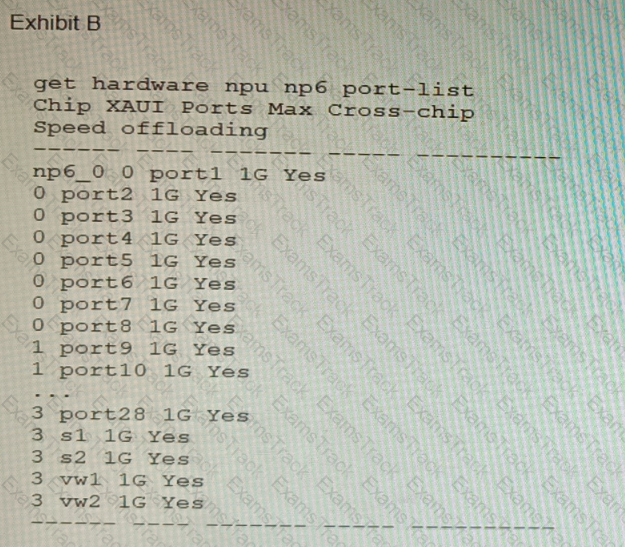
A customer is looking for a solution to authenticate the clients connected to a hardware switch interface of a FortiGate 400E.
Referring to the exhibits, which two conditions allow authentication to the client devices before assigning an IP address? (Choose two.)
You are troubleshooting a FortiMail Cloud service integrated with Office 365 where outgoing emails are not reaching the recipients' mail What are two possible reasons for this problem? (Choose two.)
Refer to the exhibits.
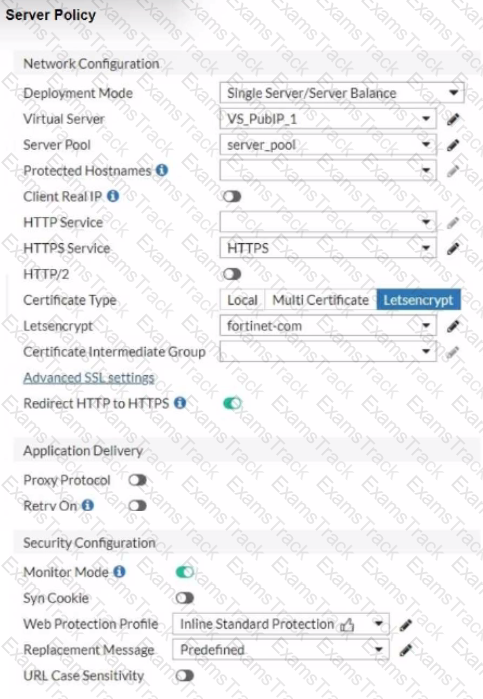
You are configuring a Let's Encrypt certificate to enable SSL protection to your website. When FortiWeb tries to retrieve the certificate, you receive a certificate status failed, as shown below.

Based on the Server Policy settings shown in the exhibit, which two configuration changes will resolve this issue? (Choose two.)
A retail customer with a FortiADC HA cluster load balancing five webservers in L7 Full NAT mode is receiving reports of users not able to access their website during a sale event. But for clients that were able to connect, the website works fine.
CPU usage on the FortiADC and the web servers is low, application and database servers are still able to handle more traffic, and the bandwidth utilization is under 30%.
Which two options can resolve this situation? (Choose two.)
What is the benefit of using FortiGate NAC LAN Segments?
|
PDF + Testing Engine
|
|---|
|
$49.5 |
|
Testing Engine
|
|---|
|
$37.5 |
|
PDF (Q&A)
|
|---|
|
$31.5 |
Fortinet Free Exams |
|---|

|